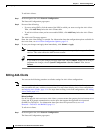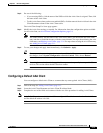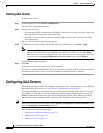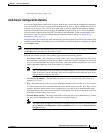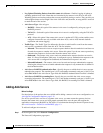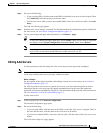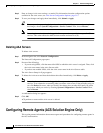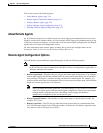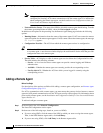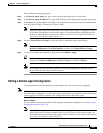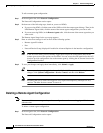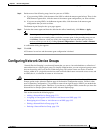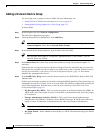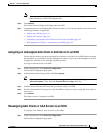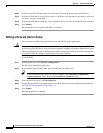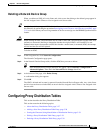
3-20
User Guide for Cisco Secure Access Control Server
OL-9971-01
Chapter 3 Network Configuration
Configuring Remote Agents (ACS Solution Engine Only)
Note If the port number that you provide does not match the port the remote agent that you
configured for listening, ACS cannot communicate with the remote agent. For information
about configuring the remote agent port, see the Installation and Configuration Guide for
Cisco Secure ACS Remote Agents Release 4.1.
• Network Device Group—The nameof theNDG to which thisremote agent should belong.To make
the remote agent independent of NDGs, chose the Not Assigned selection.
In addition to the options in the preceding list, the Remote Agent Setup page includes the following
options:
• Running Status—Information about the status of the remote agent. If ACS can contact the remote
agent, the uptime for the remote agent appears. If ACS cannot contact the remote agent, the message
Not responding appears.
• Configuration Provider—The ACS from which the remote agent receives its configuration.
Tip Click on the ACS name to access the web interface for the ACS that provides configuration data
to a remote agent. A new browser window displays the web interface for the ACS that provides
configuration data to the remote agent.
• Service Table—ACS displays a table of remote agent services below the Configuration Provider.
The table includes the following columns:
–
Service—A list of services that a remote agent can provide: remote logging and Windows
authentication.
–
Available—Whether the remote agent can currently provide the corresponding service.
–
Used by this ACS—Whether the ACS into which you are logged is currently using the
corresponding service.
Adding a Remote Agent
Before You Begin
For descriptions of the options available while adding a remote agent configuration, see Remote Agent
Configuration Options, page 3-19.
For ACS to communicate with a remote agent, you must ensure that gateway devices between a remote
agent and ACS permit communication over the TCP ports used by remote agents. For information about
ports used by remote agents, see the Installation and Configuration Guide for Cisco Secure ACS Remote
Agents Release 4.1.
To add and configure a remote agent:
Step 1 In the navigation bar, click Network Configuration.
The Network Configuration section opens.
Step 2 Perform one of the following steps, based on your use of NDGs:
a. If you are using NDGs, click the name of the NDG to which you want to assign the remote agent.
Then, in the NDG Remote Agents table, click Add Entry.
b. If you are not using NDGs, click Add Entry in the Remote Agents table.



